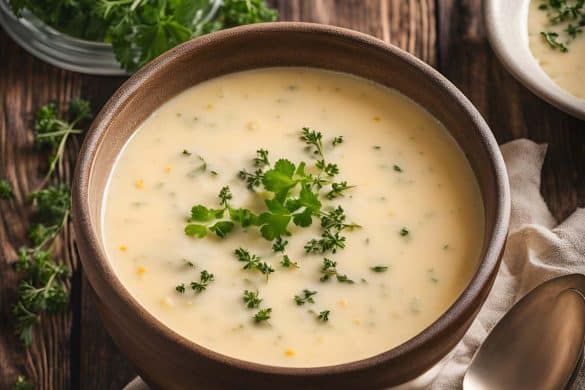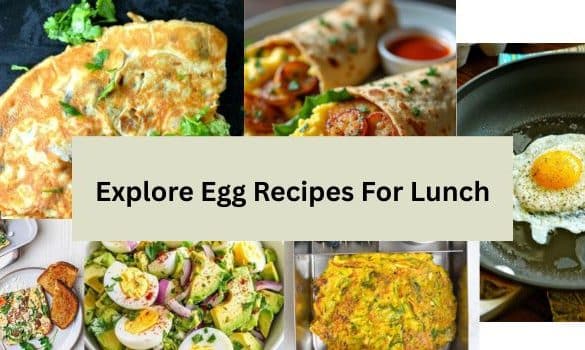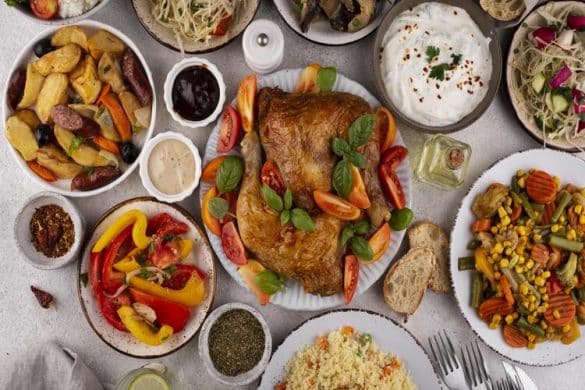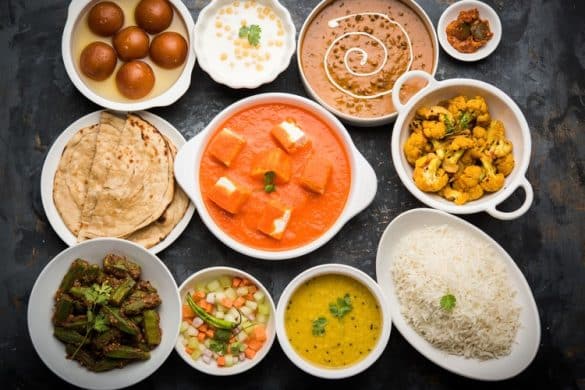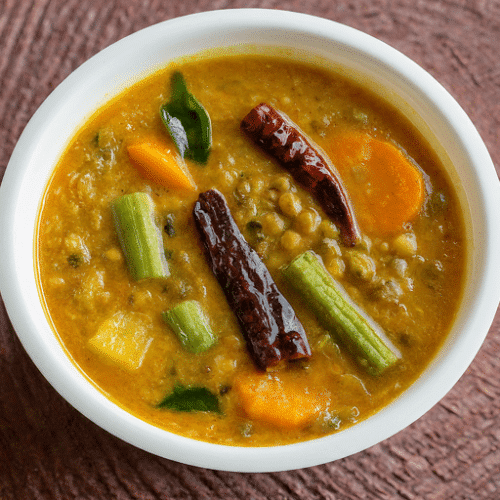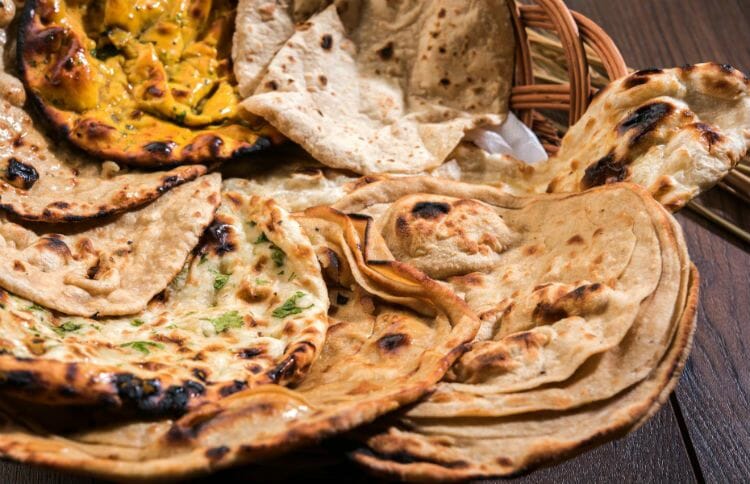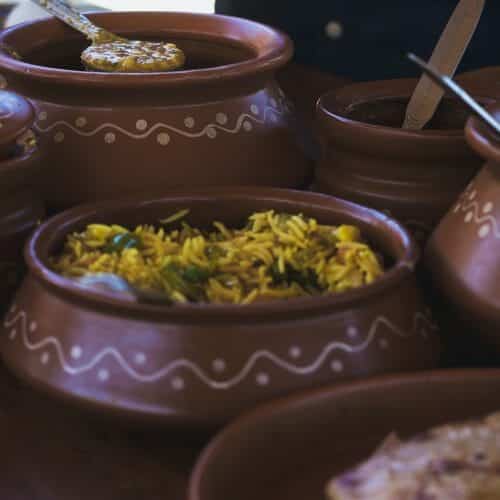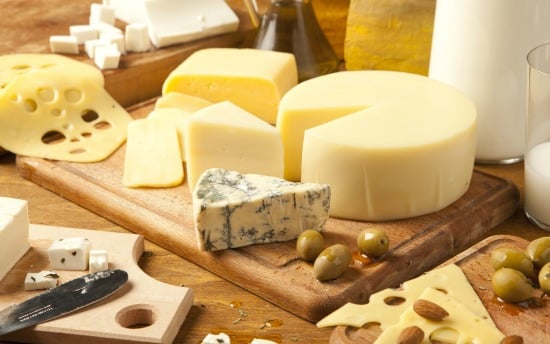When it comes to food, how do you describe it? Deliciously delectable? Yummy and scrumptious? Maybe even heavenly and succulent! We’ve all heard the same tired adjectives time and time again. But why stop there?! If you’re looking for an upgraded vocabulary in describing your favorite dishes, look no further: we have the ultimate guide on Food Adjectives that will take your taste buds to a whole new level.
Are you ready to tantalize your tongue with some mouthwatering words? Then join us as we explore a delightful array of delicious descriptions. From robust flavors to creamy textures, discover different ways to express yourself when talking about food without overusing cliches. With this article, enrich your culinary vocabulary and make every meal sound like a work of art!
So if you want to start impressing people with your sophisticated palate or want some inspiration for creating unique gourmet dishes, let’s begin our journey into Food Adjectives!
Definition
Food adjectives are words used to describe food’s flavor, texture, and presentation. They can be beneficial when discussing or writing about food—from recipes to restaurant reviews. Adjective usage is essential for chefs or home cooks who want to communicate their culinary creations effectively; clearly understanding how to express flavors and textures helps them share information with others accurately.
The types of adjectives used in describing food vary widely and depend on individual preferences and cultural influences. Some people might enjoy savory flavors, while others prefer sweet tastes; some may like crunchy foods, while others favor soft dishes. No matter what type of adjective one chooses, it should always reflect the true nature of the described word.
You have expansive vocabulary aids in creating vivid descriptions that draw readers into the story being told about the food experience. With thoughtful consideration and an eye for detail, even simple ingredients can become extraordinary through word choice alone. From here we will look at different categories of food adjectives so that you can start crafting your own delicious stories!
Types Of Food Adjectives
When it comes to describing food, there are many different categories of adjectives to choose from. Each one helps create a more vivid description and provides insight into the flavors, textures, and presentation of the dish being discussed. Here is a list of some common types of adjectives for foods:
- Flavor Adjectives – These words express taste sensations like sweet, savory, sour, salty, bitter, tangy, spicy, etc. They can also describe subtle differences between similar tastes, such as piquant versus mild or sharp versus mellow.
- Texture Adjectives – Words like crunchy, chewy, soft, tender, juicy, flaky, and smooth help communicate physical characteristics contributing to the overall eating experience.
- Visual Adjectives – Describing sight-related qualities such as color (red vs. white), shape (round vs. square), size (large vs. small), texture (glossy vs. matte), and presentation (arranged vs. scattered).
Using these three types of adjectives in combination with each other when writing about food experiences can bring your stories to life! From here, we will discuss descriptive terms used explicitly for tasting.
Descriptive Words For Taste
Tasting food is incredibly complex and involves much more than just the flavors. Many different descriptive terms are used to express what a dish tastes like, from subtle nuances in flavor profiles to overall impressions of taste. Let’s look at some common words for describing preferences as well as their definitions and examples.
- Sweet – Sweetness can be described with adjectives such as sugary, honeyed, syrupy, candy-like, or saccharine. Examples might include strawberry cheesecake or maple syrup pancakes.
- Sour – Sour flavors range from tart to tangy and can be expressed using words like puckery, acidic, astringent, sharp, or vinegar-like. Think freshly squeezed lemonade or sourdough bread here.
- Savory – Savory dishes often have umami notes that can be conveyed through descriptors like tangy, smoky, herby, earthy, nutty, deep-flavored, or hearty. Examples could include roasted vegetables with garlic herb butter or slow-cooked stews.
By familiarizing ourselves with these various descriptive terms, we can hone our skills in expressing food experiences in writing! Now let’s move on to learning about how texture plays into tasting food.
Descriptive Words For Texture
The texture is an integral part of tasting food, as it helps to create a whole sensory experience. Whether something is creamy or crunchy can significantly impact how enjoyable the meal is. Here are some common words for describing texture that you might find helpful when writing about food:
- Crispy: Crispiness can be described with adjectives like brittle, crackly, crunchy, and crisp. Think potato chips or crispy fried chicken.
- Creamy – Creaminess is often conveyed through descriptors such as smooth, velvety, buttery, fluffy, light, and fluffy. Examples include mashed potatoes or ice cream sundaes.
- Chewy – Chewiness can be expressed using gummy, tough, rubbery, and chewy terms. Examples may consist of taffy candy or braised beef short ribs.
Knowing what kind of textural description works best in different contexts can further enhance our ability to express food experiences in writing! Now let’s move on to exploring descriptive terms for temperature.
Descriptive Words For Temperature
Temperature is another crucial element when it comes to enjoying food. Hot or cold, both can make a significant difference in the way we experience dishes. Here are some words that may be helpful when describing temperature:
- Hot – If something is hot, you could use steaming, burning, sizzling, and searing adjectives. Think of a bowl of freshly made soup or french fries right out of the fryer.
- Cold – Chilly, frigid, icy, and freezing all work well to describe cold food.Examples might include an ice cream sundae or a smoothie on a hot day.
Warmth can often be conveyed through balmy, lukewarm, and tepid descriptors. A freshly baked bread or a comforting cup of tea comes to mind here.
Temperature plays a vital role in our overall enjoyment of food; understanding how best to express this can help us bring life to our writing about meals! Now let’s move on to exploring descriptive terms for aroma & smell.
Descriptive Words For Aroma & Smell
Aroma and smell are two of the most potent senses regarding food. They can evoke memories, transport us back in time, and make a simple meal special. Here are some words that may be helpful when describing aroma & smell:
- Sweet – Sugary, honeyed, syrupy, or treacly all work well for sweet scents like desserts.
- Savory – Meaty, herby, garlicky or smoky describe aromas typically associated with savory dishes. Think roasting vegetables on an open fire or simmering beef stew on the stovetop.
- Fruity – Juicy, luscious, tangy, or tart capture the essence of fruits like strawberries or oranges.
- Nutty – Nutty smells might include roasted peanuts, fragrant almonds, or freshly baked pies made with pecans. When you can access these descriptors for food aromas and smells effectively, your writing will become more vivid and engaging!
Now let’s move on to exploring descriptive terms for appearance & color.
Descriptive Words For Appearance & Color
The power of appearance and color in food is undeniable. It’s the first thing we see when presented with a plate or dish; one glance can be enough to tantalize our taste buds. To help you create captivating descriptions for your writing, here are some words which capture the essence of presentation & plating:
- Luscious – Describes vibrant colors that are inviting and draw us closer, like bright summer strawberries or ripe red tomatoes.
- Vibrant – For those dishes that pop out from the page, using vivid adjectives such as brilliant, effervescent, glowing, or luminous will make them shine even brighter!
- Rustic – Think homely comfort foods with simple ingredients like creamy mashed potatoes in a pottery bowl.
Combining all these elements into an adequate description requires a certain level of finesse. By combining exciting adjectives with painting a picture for the audience with carefully chosen nouns and verbs, you’ll have them drooling over your delectable creations before they’ve even taken their first bite!
Descriptive Words For Presentation & Plating
Presentation and plating can truly bring food to life. It’s not just about the visual appeal but also how the dish is presented – from its arrangement on the plate or bowl to accompanying garnishes and additional elements which enhance the flavor profile. With this in mind, let’s explore a few words that capture these nuances:
- Arrangement & Plating: Artful, aesthetic, intricate, balanced
- Garnish & Complements: Accompanying, enhancing, embellishing
- Texture & Taste: Savory, succulent, mouthwatering
When used together with vivid adjectives for the color and appearance of a dish, these descriptive terms will create an irresistible image that’ll make readers want to try it out for themselves! The trick is finding the right balance between being too poetic and having enough detail to give your description body without overdoing it.
Tips On Using Adjectives To Describe Food
One of the most potent tools a food writer has is adjectives – descriptive words that allow readers to truly experience the dish. With just a few carefully chosen words, you can bring your dish alive and make it irresistible to any reader! Here are some tips on how to use adjectives when writing about food:
Firstly, avoid over-describing. While vivid details might help capture the dish’s essence, try not to get too poetic or flowery with your language. Stick to simple yet effective phrases that accurately reflect what’s in front of you.
It was secondly, focusing on sensory elements like taste, texture, smell, and appearance rather than personal opinion (e.g., “the steak was delicious” isn’t as helpful as saying “the steak had a succulent charbroiled flavor”). This will give your reader an accurate impression of what they should expect from the dish without being biased by your tastes.
Finally, keep things concise but comprehensive – think quality over quantity; one carefully crafted sentence can be more impactful than several weaker ones combined. By using these techniques effectively, you’ll have no trouble filling your piece with mouthwatering descriptions, leaving readers salivating for more!
Examples Of How To Use Food Adjectives In Writing
Adjectives can describe the look, taste, smell, and texture of food. To help illustrate this point, let’s take a closer look at some examples:
The grilled salmon was plump and juicy, with just the right smokiness from being cooked over an open flame. The accompanying vegetables had been blanched to perfection – they were crisp yet tender, bursting with flavor that complemented the fish beautifully.
In another example, the freshly-baked bread had a golden crust, giving way to a soft interior filled with air bubbles. Its aroma wafted through the kitchen as it came out of the oven; its lightly sweetened flavor was divine!
These examples demonstrate how adjectives can bring dishes to life in writing by giving readers vivid details about their appearance and appeal. Moreover, using sensory words like ‘juicy,’ ‘smoky,’ ‘crisp,’ and ‘sweet’ will draw readers into your descriptions and give them a stronger sense of what each dish is like before even trying it for themselves. With these techniques firmly in place, you’ll have no trouble captivating your audience!
Benefits Of Using Adjectives To Describe Food
Using descriptive words to talk about food is a great way to bring your dishes to life and captivate readers. Beyond its ability to make writing more vivid, there are several other benefits of using adjectives when it comes to describing food:
Firstly, adjectives can be used to convey the level of quality associated with each dish. For instance, instead of saying something tastes ‘good,’ you could express how it’s ‘delicious,’ ‘scrumptious,’ or ‘divine.’ Doing so will help communicate how much effort has gone into creating a particular meal and make an emotional connection between the reader and their possible dining experience.
Secondly, they can further enhance descriptions by providing details beyond texture and flavor – like color or temperature. This helps paint a clearer picture for readers who may not have had the opportunity to taste certain foods before, enabling them to understand better what might await them if they were ever fortunate enough to do so.
Finally, adjectives provide an excellent platform for creativity in cooking. Whether it’s coming up with exciting ways to describe ingredients or combining flavors in unusual combinations, these words give chefs the freedom to experiment and explore new ideas without worrying about being judged too harshly on their results.
With this in mind, adjectives offer many advantages when it comes time for someone to write about food – from inspiring culinary creators to giving readers an accurate idea of what they’re getting themselves into! As such, learning how to utilize these powerful tools is essential for budding writers hoping to capture readers’ attention with their work.
Popular Culinary Terms And Their Meanings
As with any language, the culinary world has its own set of words and phrases that can be used to describe food. From describing texture to flavors, these terms are invaluable tools for chefs and diners alike – providing a clear idea of what they’re getting into before they even take their first bite! Like dazzling stars illuminating a night sky, let’s explore some of the most popular adjectives commonly used in cooking:
Mouthwatering is one of the most common descriptive terms you’ll hear when talking about food. It suggests something so delicious that it causes salivation in anticipation – making it an ideal choice for dishes featuring bold flavors or unique ingredients. Similarly, succulent denotes juiciness and tenderness, perfect for meats like pork chops or roasted chicken.
On the other hand, if someone wants to convey a dish’s crunchy consistency, then ‘crispy’ may be more appropriate – but depending on how crisp they want it to sound, there could also be options such as ‘crunchy,’ ‘flaky’ and ‘crumbly.’ Additionally, if someone were looking for a term to express sweetness, ‘luscious’ might be more appropriate than simply saying ‘sweet.’
With this range of choices at hand, no matter what type of meal someone is trying to create, there’s sure to be an adjective capable of conveying just the right amount of flavor and texture needed! Now that we have explored many popular culinary descriptors available in English let us move on to cultural differences in the use of food adjectives.
Cultural Differences In The Use Of Food Adjectives
Moving beyond the most popular culinary terms, there are also several cultural differences in how food is described. In some cultures, for instance, dishes may be referred to using more poetic language – with descriptors such as ‘heavenly’ or ‘divine’ instead of simply saying that something tastes good. Additionally, many languages around the world have their own unique words and phrases specifically designed to describe different flavors and textures:
- In Spanish-speaking countries, dishes may be referred to as sabroso (tasty) or jugoso (juicy).
- In French cuisine one might find descriptions like moelleux (soft) or croustillant (crispy).
- Japanese chefs often use umami to denote a savory flavor profile.
An individual’s culture can play an essential role in shaping what kind of adjectives they use when discussing food. While these commonly employed terms help us better understand each other’s meals, diners and chefs can create unique descriptors for specific dishes too!
Creating Your Unique Food Adjectives
When it comes to discussing food, there is no one-size-fits-all solution. In addition to regional variations in how dishes are described, diners and chefs may also want to create unique descriptors for specific words. With imagination and experimentation, anyone can craft creative ways to describe the flavors and textures of their favorite foods.
Here are some tips on creating your unique food adjectives:
- Use sensory descriptions: Describe what you’re tasting or smelling by relying on your five senses – sight, sound, touch, taste, and smell. This technique will help make your description more vivid and memorable. For example, instead of describing a dish as ‘spicy,’ try something like ‘the sauce has an intense kick that lingers on my tongue.’
- Combine words: Think outside the box by combining two or more words to develop new descriptive terms. Examples might include ‘creamy crunchiness’ or ‘smoky sweetness’ – phrases that paint an evocative picture without commonly used words such as ‘delicious’ or ‘tasty.’
By creating our own personalized language when talking about food, we can deepen our appreciation for each meal shared at the table. It’s not just about finding the proper adjectives – but learning to use them in exciting and inventive ways too!
Creative Ways To Incorporate Food Adjectives
Have you ever thought about how you could use food adjectives to make your dining experience more exciting and creative? From menus to conversations around the table, there are many ways to incorporate adjectives into our descriptions of food. Here are a few ideas:
- Use them in menus: Whether creating the menu for an event or just writing up the weekly family dinner list, adding descriptive words can add flavor and personality. Instead of ‘grilled chicken,’ why not try something like ‘summer-spiced grilled chicken’? Simple changes like this will help set the tone for a memorable meal.
- Try using similes and metaphors: We create vivid mental images by comparing dishes to other things. For instance, instead of saying that some soup tastes ‘rich,’ you might say it’s ‘as rich as velvet.’ This adds intrigue and encourages diners to think beyond their expectations!
- Narrate with adjectives: If you’re cooking something special, narrating what you’re doing out loud is a great way to bring everyone together at the table. As well as describing each step of the process – from prepping ingredients to plating up – be sure to include sensory details such as texture, aroma, and taste.
By getting creative with food adjectives, we can inject new life into familiar dishes while also appreciating all aspects of our meals – from preparation to consumption!
Conclusion
Food adjectives are a great way to express your culinary creativity and evoke vivid emotions. They can help bring life to an otherwise mundane dish, making it more enjoyable for everyone involved. By using descriptive words to convey a food item’s taste, texture, temperature, or cultural significance, you can make your meal memorable and exciting.
By understanding how to use food adjectives correctly and creatively, you can also enhance your dishes with beautiful descriptions that will entice the senses of anyone lucky enough to sample them. This skill will add flavor and emotion to your recipes that will linger long after the last bite has been taken.


